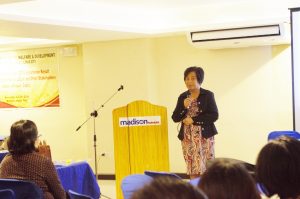THE Department of Social Welfare and Development (DSWD) Field Office VI yesterday called on Local Government Units (LGUs) to utilize the Listahanan database.
“We cannot treat a problem without diagnosis. We can only respond to them properly if we know the situation. Listahanan gives us the data so we could respond,” said Assistant Regional Director for Administration (ARDA) of DSWD6 during the Orientation and Presentation of Listahanan results for the provinces of Aklan, Antique and Capiz.
Listahanan, also known as the National Household Targeting System for Poverty Reduction (NHTS-PR), is a database of who and where the poor are in the country.
Per its database, Listahanan identified 252,584 poor households out of 802, 779 assessed households in the region.
The total number of poor households translates to 1,459,010 individuals.
Of the poor households, 86.8 percent or 219,306 of them live in rural areas while 13.2 percent percent live in urban areas.
Twenty-six percent (66,346) of them have no access to electricity, 44.6 percent (112,777) do not have a safe source of water and 30.5 percent practice open defecation.
Over twelve thousand poor household belong to Indigenous People’s Group.
The highest magnitude of IPs in the region are found in the towns of Calinog, Libacao, Tapaz, Lambunao and Janiuay.
“Data without analysis is futile. Now that we have the Listahanan, we urge LGUs to use the database in implementing programs in the local level,” said Felecio.
Felecio acknowledged that the LGUs have their own social services and if these are implemented using the Listahanan database, “there will be no wastage in resources.”
Orientation and presentation of Listahanan result for Iloilo and Guimaras will be conducted next week./dswd6/May Rago-Castillo
Caption: ARDA Evangeline Felecio urges Local Social Welfare and Development Officers to use the Listahanan database in their local programs
